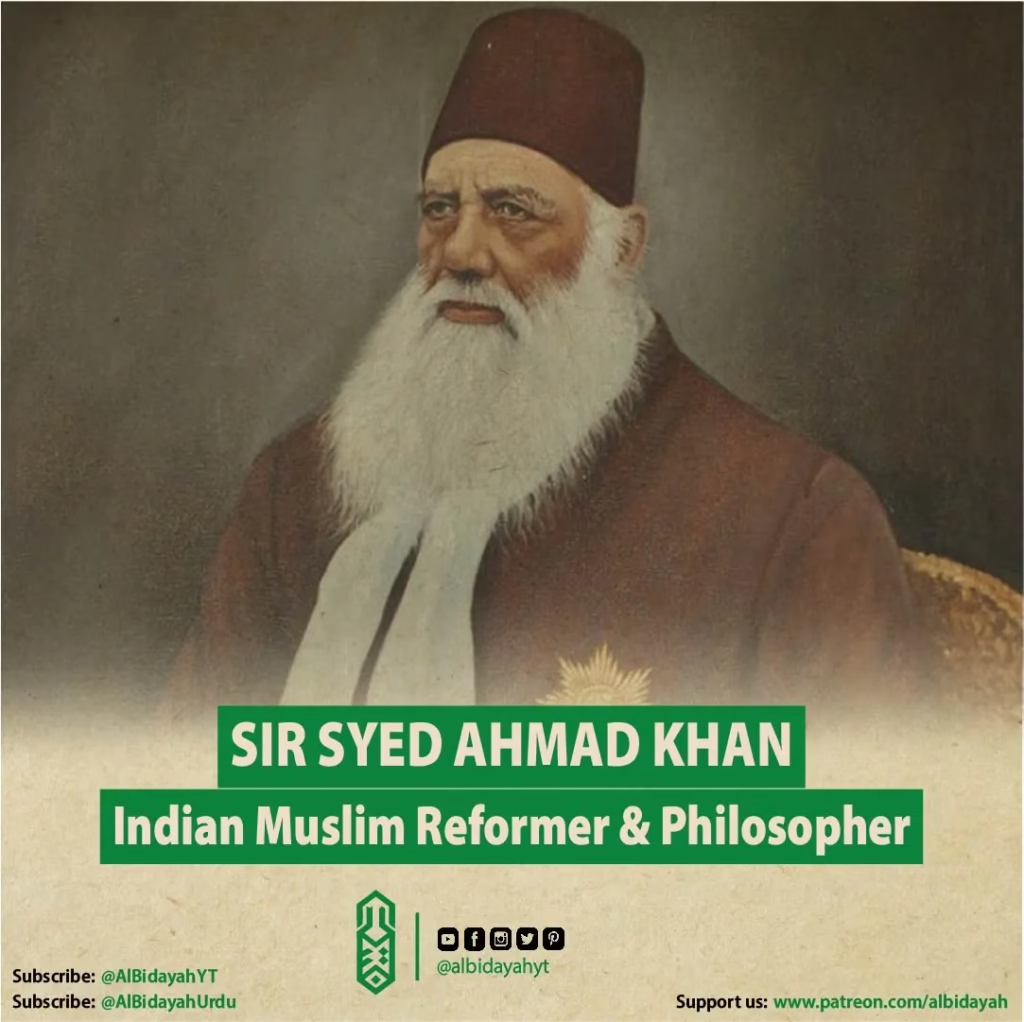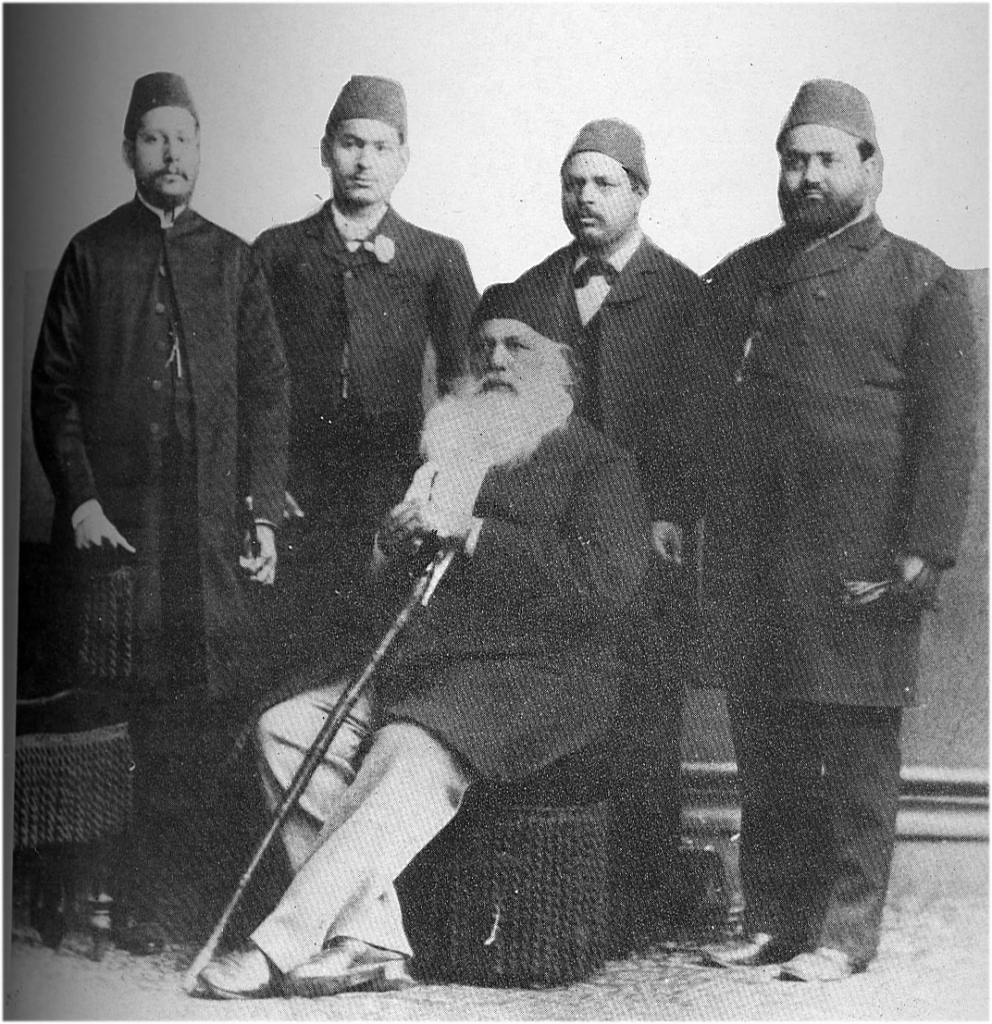On 17 October in 1817 CE, famous Islamic reformer, philosopher, educator, scholar, and the founder of the Aligarh Muslim University, Sir Syed Ahmad Khan was born in Delhi during the reign of Mughal Emperor Akbar II. Sir Syed is considered as one of the most important architects of modern India.

Early Life and Family Background
Sir Syed was born into a noble family that had served the Mughal court for nearly two and a half centuries. His lineage traced back to Prophet Muhammad (PBUH) through Fatimah and Ali ibn Abi Talib.
Raised in a Sufi household by his maternal grandfather Khwaja Fariduddin, a descendant of the 12th-century Naqshbandi scholar Khwaja Mohammad Yusuf Hamdani, Sir Syed grew up in a spiritually rich and scholarly environment.
Career in the Mughal and British Administration
Sir Syed began his career as an assistant clerk in Agra, where his dedication and honesty earned him steady promotions. He later served in Mainpuri, Fatehpur Sikri, Delhi, and Bijnaur, eventually becoming Sadr-us-Sudoor (chief judge) in Moradabad, Ghazipur, and Banaras.
His reputation for integrity and efficiency gained him great respect among the people and recognition from the British government, which later conferred upon him the title “Sir”.
The Impact of the 1857 Revolt
The Revolt of 1857 deeply affected Sir Syed Ahmad Khan. Witnessing the decline of Muslims after the uprising, he became determined to reform and uplift the community. He realized that the key to progress lay in modern education and rational thinking rather than emotional resistance.
He believed Muslims must embrace English and Western sciences to survive in the new world order. His goal was to eliminate prejudice against modern learning and lead society toward intellectual awakening.
Educational Reforms and the Aligarh Movement
To promote education, Sir Syed established the Scientific Society in Ghazipur (1864), which translated Western academic works into Urdu. Later, in 1870, he launched the journal Tahzib-ul-Akhlaq, encouraging critical thought and modern consciousness among Muslims.
His greatest achievement was the founding of Madrasat-ul-Uloom in Aligarh, later known as the Mohammedan Anglo-Oriental College, which eventually evolved into the Aligarh Muslim University (AMU).
Today, AMU stands as a living legacy of Sir Syed’s vision, representing a bridge between Islamic values and modern education.
Legacy and the Aligarh Movement
The Aligarh Movement, inspired by Sir Syed’s vision, reshaped Indian Muslim identity and created a new intellectual culture. It promoted Urdu literature, introduced modern prose, and inspired notable writers such as Khwaja Altaf Hussain Hali, Allama Shibli Nomani, Maulvi Nazir Ahmad, and Maulvi Zakaullah.
Sir Syed’s writings reflected a rational, clear, and simple prose style, emphasizing reason over tradition and encouraging Muslims to engage with the realities of the modern world.

See Also: The Last Mughal Emperor, Bahadur Shah Zafar died in exile



